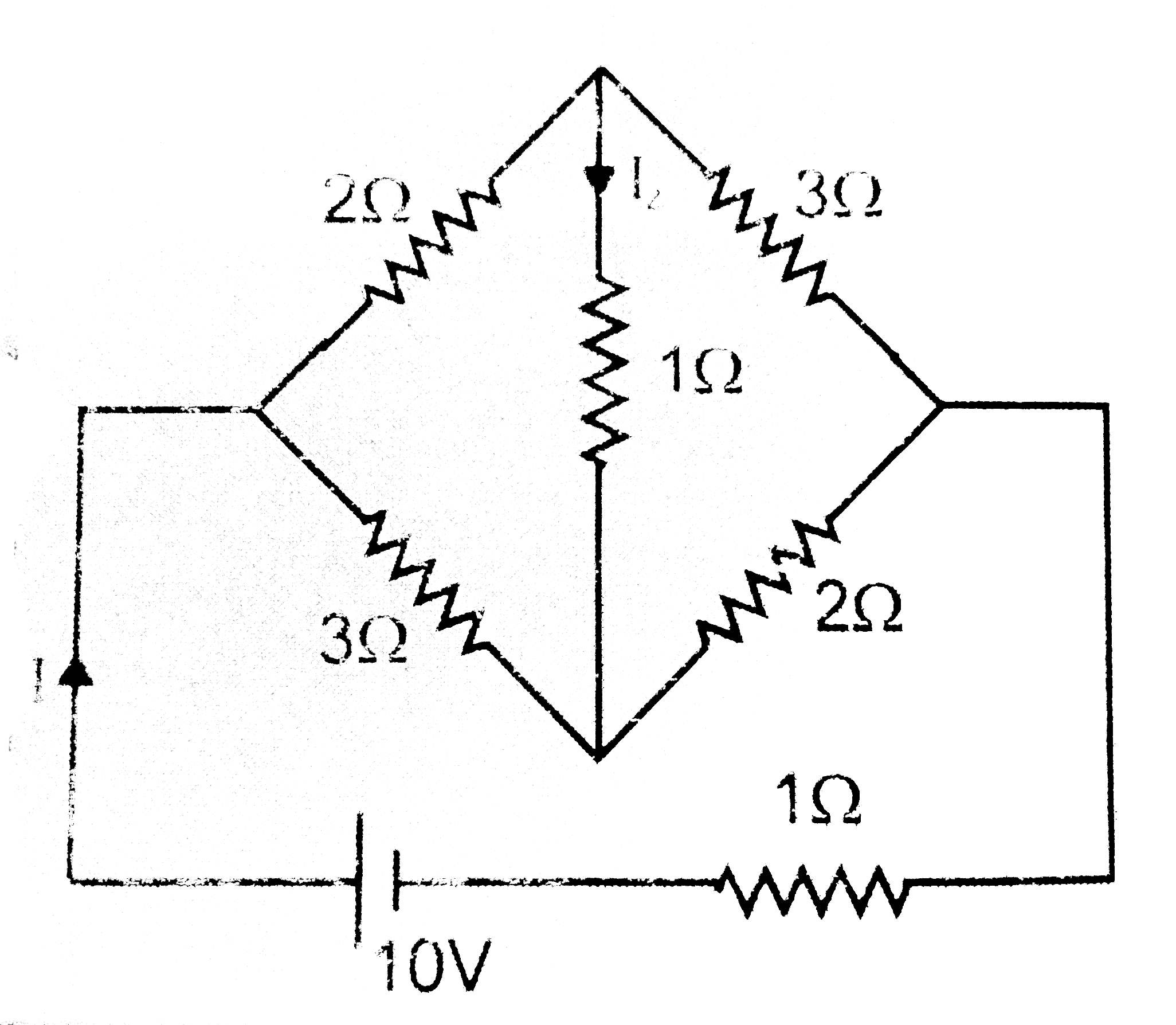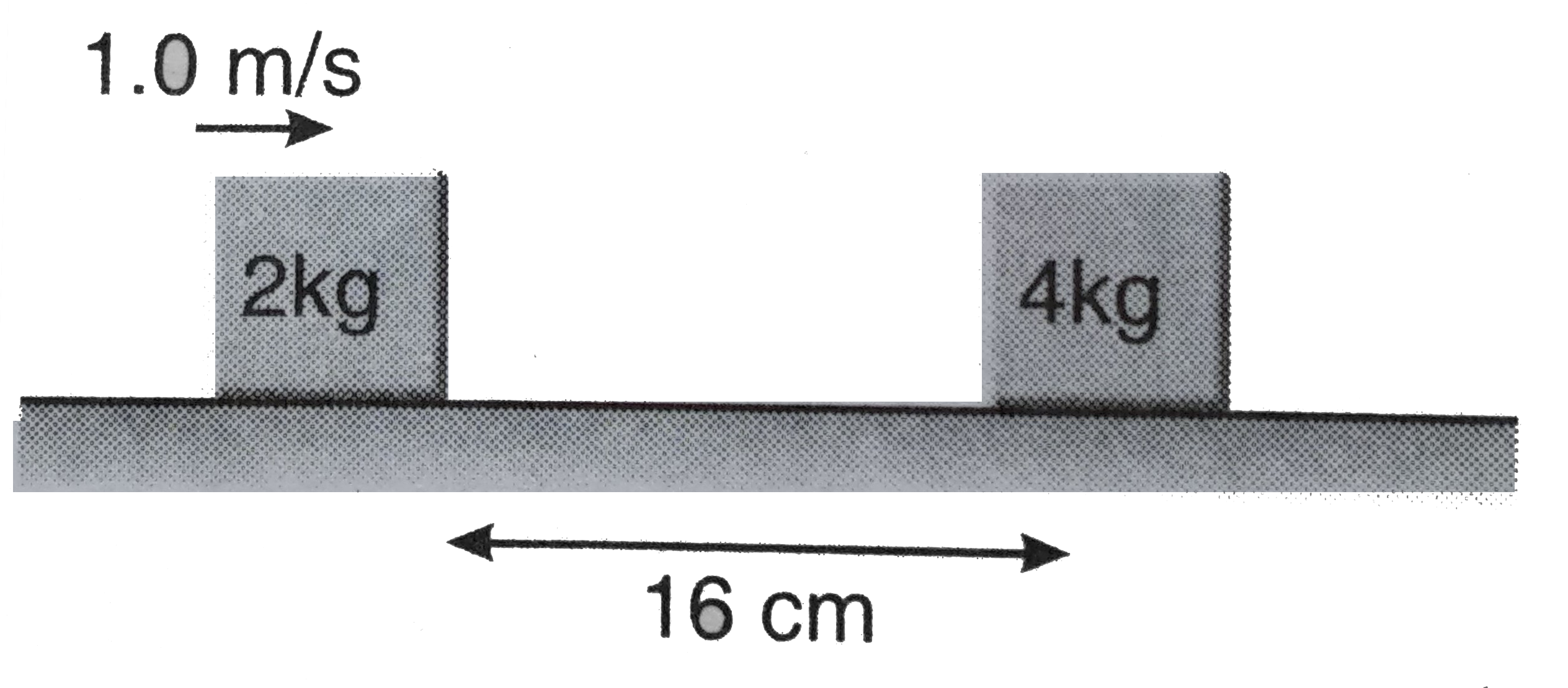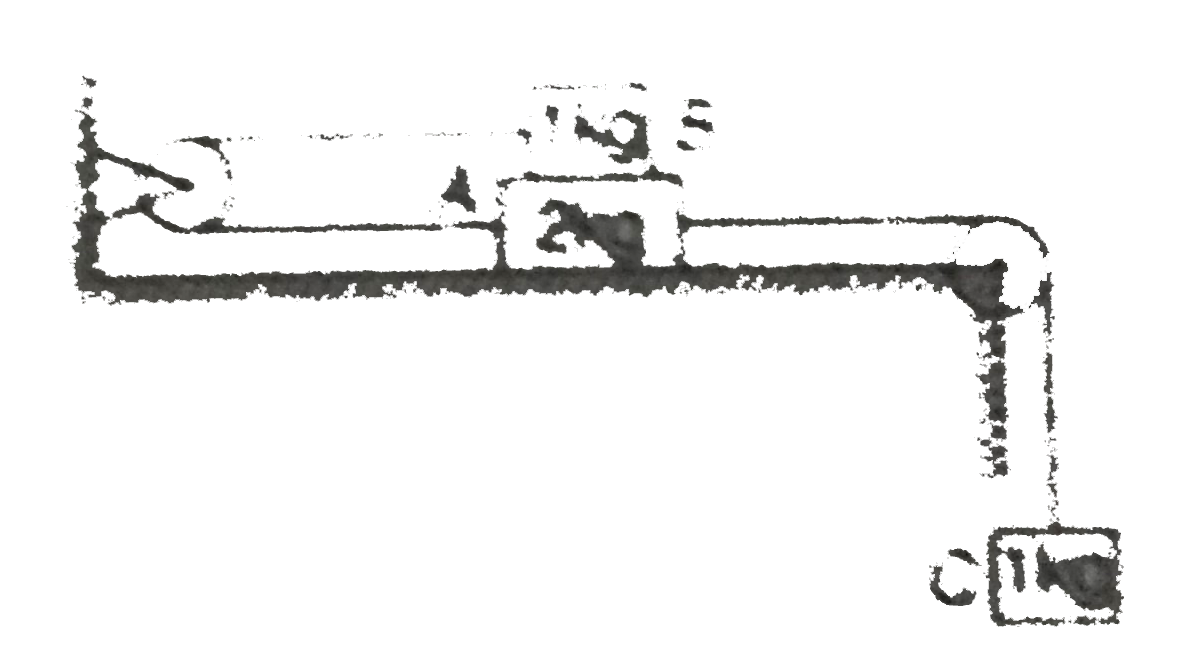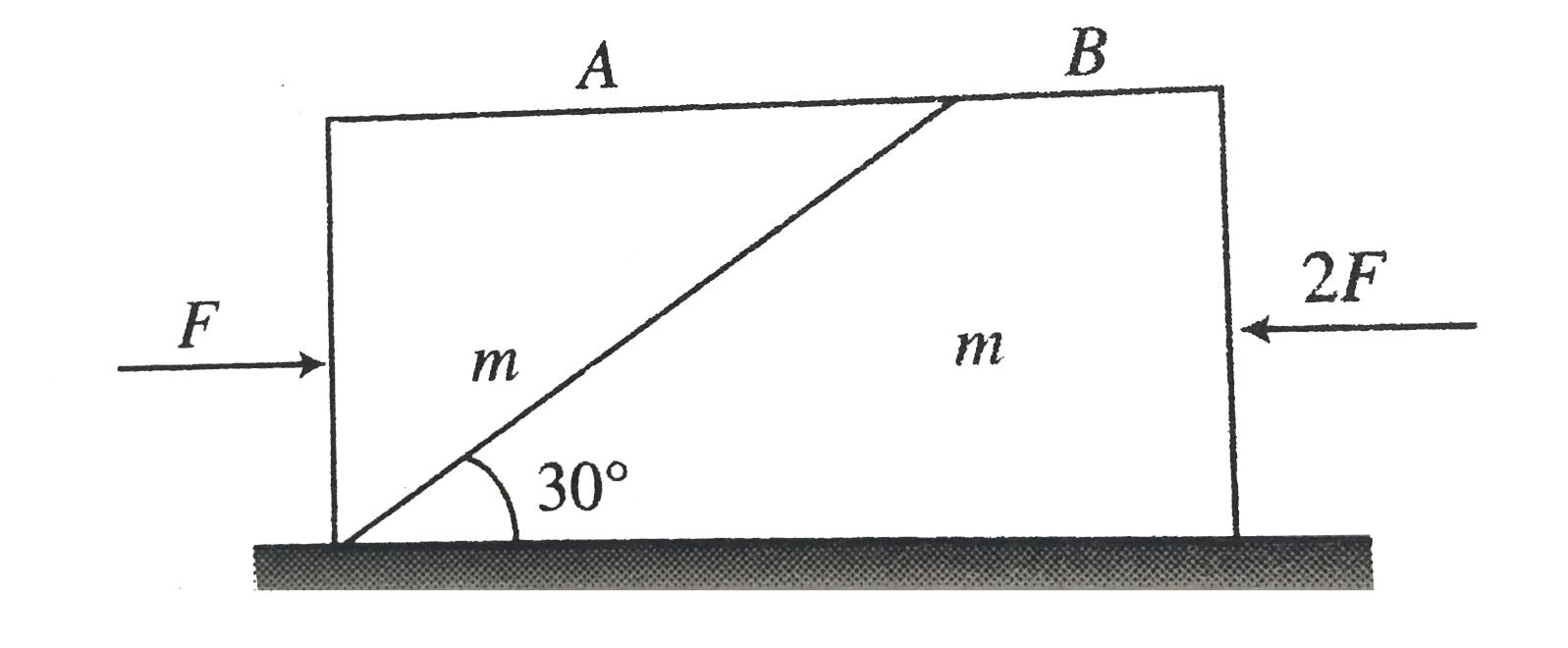The friction coefficient between the horizontal surface and blocks A and B are 115 and 215 respectively. The collision between the blocks is perfectly elastic. Find the separation (in meters) between the two blcoks when they come to rest.

The correct Answer is:5m
Velocity of block A just before collision vA=√u2A−2μgx=√16−2115(10)(2)=√403
Velocity of Block B just after collision vB=vA=√403
Velocity of Block A just after collision =0
Total dsitance travelled by block B =v2B2μg=40/32215(10)=5m
Topper's Solved these Questions
- BOOK - ALLENCHAPTER - CENTRE OF MASSEXERCISE - EXERCISE-I40videos
CENTRE OF MASS
- BOOK - ALLENCHAPTER - CENTRE OF MASSEXERCISE - EXERCISE-II43videos
CENTRE OF MASS
- BOOK - ALLENCHAPTER - BASIC MATHEMATICS USED IN PHYSICS &VECTORS EXERCISE - EXERCISE-IV ASSERTION & REASON11videos
BASIC MATHEMATICS USED IN PHYSICS &VECTORS
- BOOK - ALLENCHAPTER - ELASTICITY, SURFACE TENSION AND FLUID MECHANICSEXERCISE - Exercise 5 B (Integer Type Questions)3videos
ELASTICITY, SURFACE TENSION AND FLUID MECHANICS
Similar Questions
The friction coefficient between the horizontal surface and each of the blocks shown in figure is 0.20. The collision between the blocks is perfectly elastic. Find the separation between the two blocks when they come to rest. Take g=10ms2.
 View Solution
View SolutionThe friction coefficient between the horizontal surface and each of the block shown in the figure is 0.2. The collision between the blocks is perfectly elastic. Find the separation between them when they come to rest. (Take g=10m/s2).
 View Solution
View Solution
Knowledge Check
- Question 1 - Select One or More
In a perfectly elastic collision between two bodies
AKinetic energy of the system remains constant .BMechanical energy of the system remains constant .CKinetic energy first decreases and then ncreases .DKinetic energy before collision is equal to kinetic energy after collision . - Question 2 - Select One
A long conveyer belt moves with a constant velocity of 8ms−1.Two blockA and B each of mass 2kg are placed gently on the belt with B on A, initail velocity of block is zero Coefficient of friction between A and belt is 0.1 There is no friction between A and B length of A is 4m

If the coefficient of friction between the block B and belt is 0.4 Find the separation between the two block when B come to rest w.r.t. beltA8mB6mC2mDNone of these - Question 3 - Select One
If coefficient of friction between both the block is μ−12 . Find friction force acting between both block.
 A16NB20NC8ND10N
A16NB20NC8ND10N
A small block of mass M moves with velocity 5 m/s towards an another block of same mass M placed at a distance of 2 m on a rough horizontal surface . Coefficient of friction between the blocks and ground is 0.25 . Collision between the two blocks is elastic , the separation between the blocks , when both of them come to rest , is ( g = 10m/s2)
View SolutionFriction coefficient between any two surface in contact is 0.5 pulleys and string aare frictioness .Find the friction between blocks A and B ( in newton)
 View Solution
View SolutionFor shown situation, if collision between block A and B is perfectly elastic, then find the maximum energy stored in spring in joules.
 View Solution
View SolutionBlock A has a mass 3kg and is sliding on a rough horizontal surface with a velocity uA=2m/s when it makes a direct collision with block B, which has a mass of 2kg and is originally at rest. The collision is perfectly elastic. Determine the velocity of each block just after collision and the distance between the blocks when they stop sliding. The coefficient of kinetic friction between the blocks and the plane is μk=0.3 ( Take g=10m/s2)
View SolutionTwo blocks A and B each of mass m are placed on a smooth horizontal surface. Two horizontal force F and 2F are applied on blocks A and B, respectively, as shown in fig. Block A does not slide on block B. Then then the normal reaction acting between the two blocks is (assume no friction between the blocks)
 View Solution
View Solution

